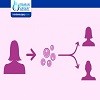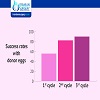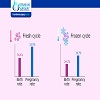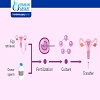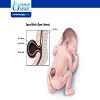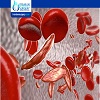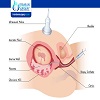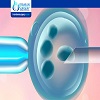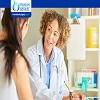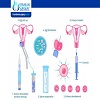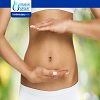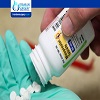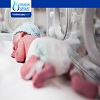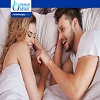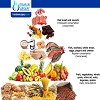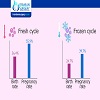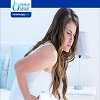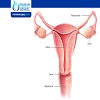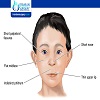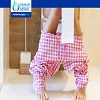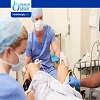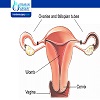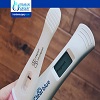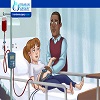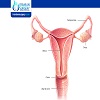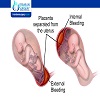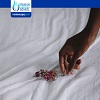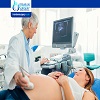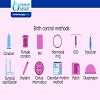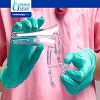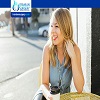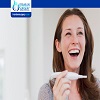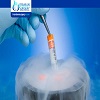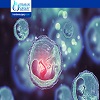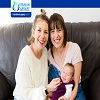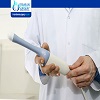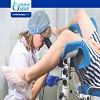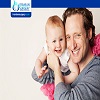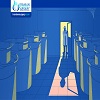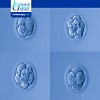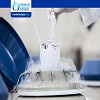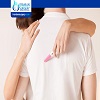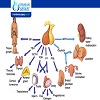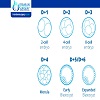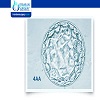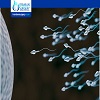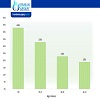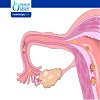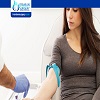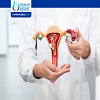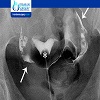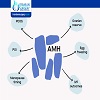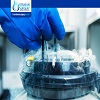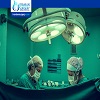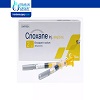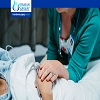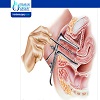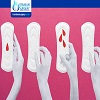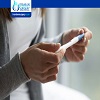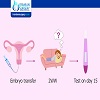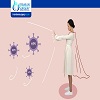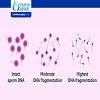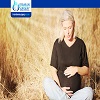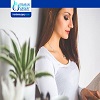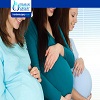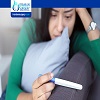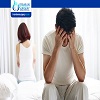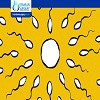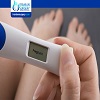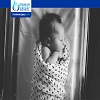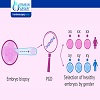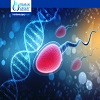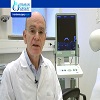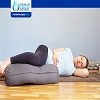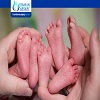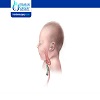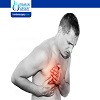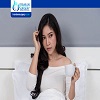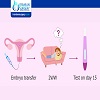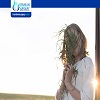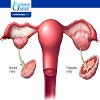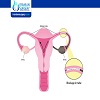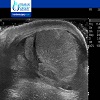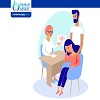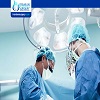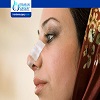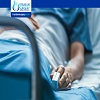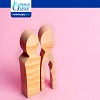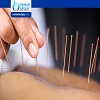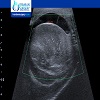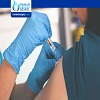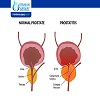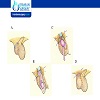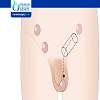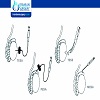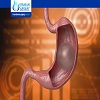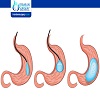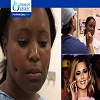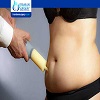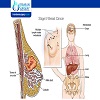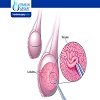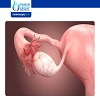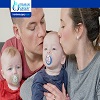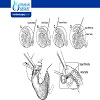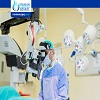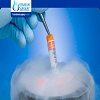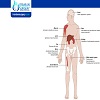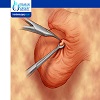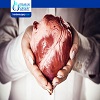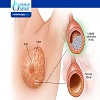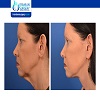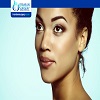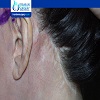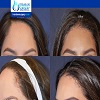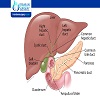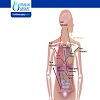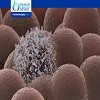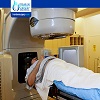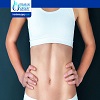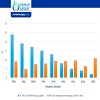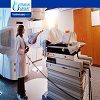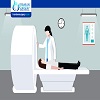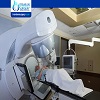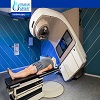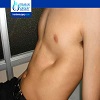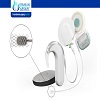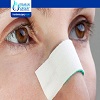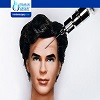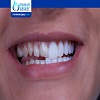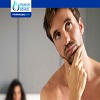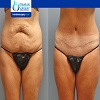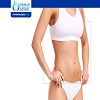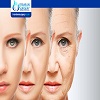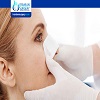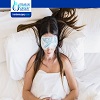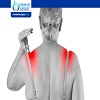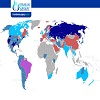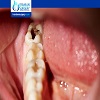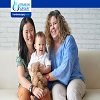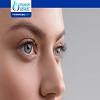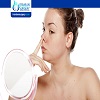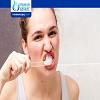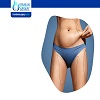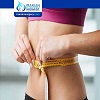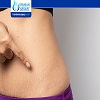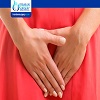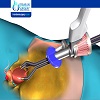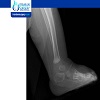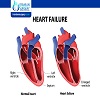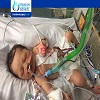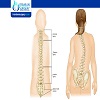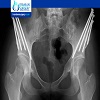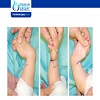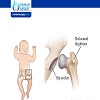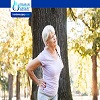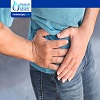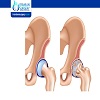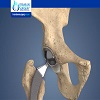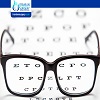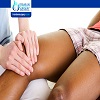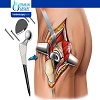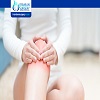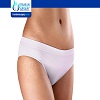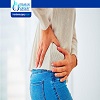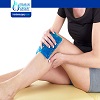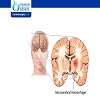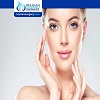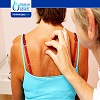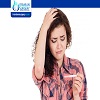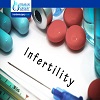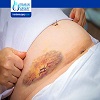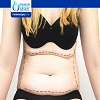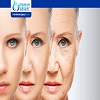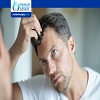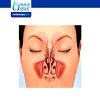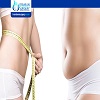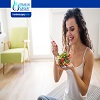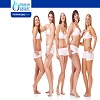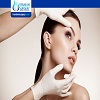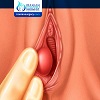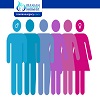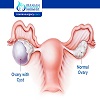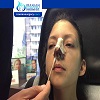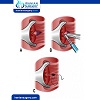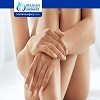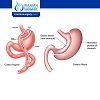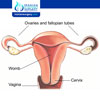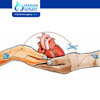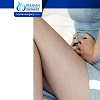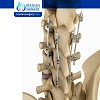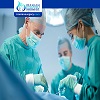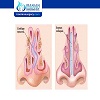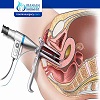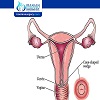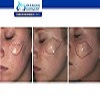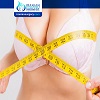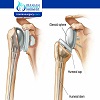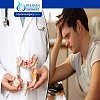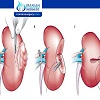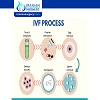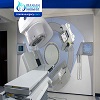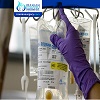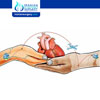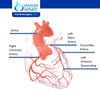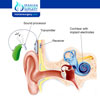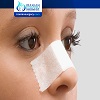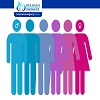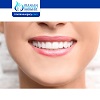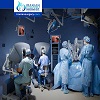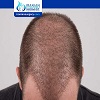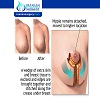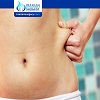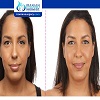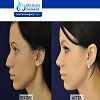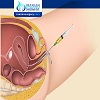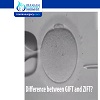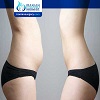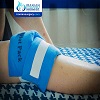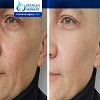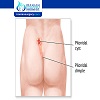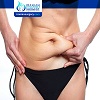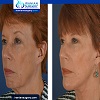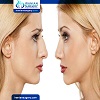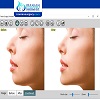Find Diseases & Treatment
The first part of every journey begins with identifying the intended parent(s) needs. While some intended parents will continue on the conventional path of IVF, many will need to supplement their IVF cycle with additional services for one reason or another.
It’s common for hopeful parents to have questions about the difference between IVF and donor eggs. IVF with your own eggs and a cycle with donor eggs have many similarities and differences.
Many women think that as long as they are still having periods, they are fertile. While some women continue to have regular cycles into their 50s, the number of remaining eggs in the ovaries is greatly diminished with age.
How can we help you have a baby if you’re single, and an older woman? Or if you are an older woman and your partner has a sperm disorder? Or you’re an older woman in a same-sex relationship?
Spina bifida is one of the most commonly occurring inborn disorders (birth defects) in the United States. It’s caused by the incomplete development of the fetus’ spine during the first month of pregnancy.
Sickle cell anemia is a form of the inherited blood disorder, sickle cell disease. Sickle cell anemia affects your red blood cells, turning them from round flexible discs into stiff and sticky sickled cells.
A vasectomy reversal (vasovasostomy) is a surgical procedure that reverses the results of a vasectomy.
Chorionic villus sampling (CVS) is a type of prenatal testing. You may choose to undergo this genetic testing during pregnancy to check your unborn baby (fetus) for health conditions like Down syndrome. It also confirms sex.
The IVF process involves stimulating egg production to later retrieve the eggs and fertilize them in a lab. After that, the embryos are transferred back into the uterus with the hope of implantation.
Egg donation is becoming more accepted in the reproductive space, with hundreds of donated eggs each year. There are a lot of reasons why a woman would decide to donate eggs to a fertility clinic.
Egg donation is the process of a woman willingly giving eggs to help another have a baby. Donation is critical for women with a long history of miscarriages, those unable to produce eggs, or same-sex couples.
Polycystic Ovary Syndrome (PCOS) is one of the major causes of female infertility. Almost 40% of women suffer from polycystic ovaries (PCO) to some degree.
Women who want to donate eggs often wonder — what is the maximum age at which a woman can become an egg donor? Can any woman in the reproductive age donate?
Here you will read an egg donor’s story of becoming infertile after donating eggs, and what experts say needs to be done to prevent this from happening to other women.
The history of egg donation began in 1983 when Australia reported the first known successful pregnancy using donated eggs.
If you’ve considered becoming an egg donor, you’ve likely been curious about whether donating your eggs will affect your future fertility.
The decision to donate your eggs is life-changing, as well as life-giving. The parents who receive your eggs will be forever grateful for the chance to have children that they otherwise couldn’t have—a chance that you gifted them.
A medical abortion (or medication abortion) is a procedure in which medication (prescription drugs) is used to end a pregnancy.
A blighted ovum (also called an anembryonic pregnancy) is a type of early miscarriage that occurs when a fertilized egg implants into the uterus but does not develop into an embryo.
Premature or pre-term labor is labor that begins more than three weeks before you are expected to deliver. Contractions (tightening of the muscles in the uterus) cause the cervix (lower end of the uterus) to open earlier than normal.
Heavy menstrual bleeding (formerly called menorrhagia) is when your periods are extremely heavy or prolonged. “Heavy” means that your period lasts longer than seven days or that you lose more blood than is typical during menstruation.
Prenatal vitamins are specially formulated multivitamins that mothers-to-be are advised to take for their own health as well as for the health of their babies.
After egg retrieval, your body faces hormonal changes; as a result, your first or second period after egg retrieval may be missed or delayed, which is quite normal.
In our experience, patients are usually able to manage any pain after the retrieval with a prescription strength pain medication the evening of the retrieval and over the counter pain medications for the next day or two.
For patients undergoing fertility treatment, especially after procedures such as egg retrieval or embryo transfer. The frequently asked question of couples is the problem of having sex after these procedures.
If you just did your egg retrieval, great job! That is no small feat. Your work is done, so it’s time to leave the rest up to the embryology lab at your fertility clinic.
Some discomfort such as bloating or cramps is common after egg retrieval. Your doctor will let you know what pain medications are best to use after the egg retrieval procedure.
Blood pressure is the force of blood pushing against blood vessel walls. The heart pumps blood into the arteries (blood vessels) that carry the blood throughout the body.
Using donor eggs for your IVF treatment isn’t just a case of undergoing an embryo transfer.
The female reproductive system provides several functions. The ovaries produce the egg cells, called the ova or oocytes.
Dysmenorrhea is the medical term for pain with your period (menstruation) or menstrual cramps. There are two types of dysmenorrhea: primary and secondary.
Amenorrhea is when you don’t get your monthly period. It can be temporary or permanent. Amenorrhea can result from a change in function or a problem with some part of the female reproductive system.
Also known as contraception, birth control prevents pregnancy. You have many different birth control options, including the birth control pill.
Placenta previa occurs when the placenta covers the opening of the cervix during the last months of pregnancy. This condition can cause severe bleeding before or during labor.
Fetal alcohol syndrome (FAS) is a condition that develops in a fetus (developing baby) when a pregnant person drinks alcohol during pregnancy.
If you’re considering in vitro fertilization or egg freezing you may wonder what to expect after egg retrieval. Perhaps there’s a medical reason your doctor is suggesting fertility preservation, IVF or even embryo cryopreservation.
People with ovaries are increasingly spending their 20s and 30s moving up the career ladder or achieving financial stability — and postponing having kids until later in life.
According to the American Society of Plastic Surgeons, Brazilian butt lifts grew in popularity by 26% from 2015 to 2016, inspired in part by celebrities with memorable backsides, such as Kim Kardashian and Jennifer Lopez.
If you have ever attempted to plump up your rear end with diet and exercise changes, you know that it can be extremely challenging – if not impossible – to achieve the look you’re after.
Sterilization by laparoscopy is a surgical procedure that provides permanent birth control for women. Female sterilization involves obstruction or removal of the fallopian tubes.
A chemical pregnancy is a very early miscarriage that happens within the first five weeks of pregnancy. An embryo forms and may even embed in your uterus lining (implantation), but then it stops developing.
The signs of an early pregnancy can vary from woman to woman. You may feel your body making changes quickly (within the first month of pregnancy) or you may not notice any symptoms at all.
HELLP syndrome is a pregnancy complication. It is a type of preeclampsia. It usually occurs during the third trimester of pregnancy. But it also can develop in the first week after childbirth (postpartum preeclampsia).
In the female reproductive system, the cervix is the lower end of the uterus. The cervix is the part of the uterus which opens into the vagina.
Placental abruption is a complication of pregnancy that happens when the placenta separates from your uterus before your baby is born.
A miscarriage (also called a spontaneous abortion) is the unexpected ending of a pregnancy in the first 20 weeks of gestation.
In ultrasonography, or ultrasound, high-frequency sound waves are sent through your abdomen by a device called a transducer.
Birth control is a way for men and women to prevent pregnancy. There are many different methods of birth control. By learning more about the options, you can decide which method is right for you and your partner.
Complications can arise in pregnancies for many reasons. Sometimes a woman’s existing health conditions contribute to problems. Other times, new conditions arise because of hormonal and body changes that occur during pregnancy.
A Pap smear (also called a Pap test) screens for cervical cancer. The test checks for abnormal cells in the cervix that are cancerous or have the potential to become cancerous.
Menstruation is the monthly shedding of the lining of your uterus (more commonly known as the womb).
The male reproductive system includes a group of organs that make up a man’s reproductive and urinary system. These organs do the following jobs within your body:
Ovulation is a phase in the menstrual cycle. It occurs at about day 14 of a 28-day menstrual cycle. Specifically, ovulation is the release of the egg (ovum) from a woman’s ovary.
Many women choose egg freezing because they know they want to become mothers someday, but they aren’t certain what the future holds.
Egg freezing or oocyte cryopreservation is becoming more and more accepted among women. Oocyte preservation was once considered a complex process. With the availability of medical support and technology, egg freezing is now accessible.
Will freezing your eggs impact your chance of getting pregnant naturally down the road? The short answer: no, because egg freezing makes use of eggs that would otherwise have been lost in a process known as “atresia.”
For patients who have chosen to undergo in vitro fertilization (IVF) treatment, it is hard not to get excited about the prospect of finally achieving pregnancy.
Ultrasound (also called sonography or ultrasonography) is a noninvasive imaging test. An ultrasound picture is called a sonogram.
A pelvic exam is a way for healthcare providers to look for signs of illness or disease in a woman’s body. The word “pelvic” refers to the organs in the pelvis. The exam is used to look at a woman’s:
Women today are choosing to have children later in life than ever before. Egg freezing can enable a woman to delay pregnancy until a later stage. Medical professionals refer to the procedure as oocyte cryopreservation.
You are 3- 6% more likely to have a baby boy than a girl when using IVF to conceive. IVF increases the odds of a boy from 51 in 100 when conceived naturally to 56 in 100 with IVF. Up until recently, we have not known why.
If you’re considering egg donation as a method of building your family, you may be wondering what it will be like. How do you choose an egg donor? How will you feel about your egg donor-conceived child?
If you are considering starting a family or building onto your current family through surrogacy, you likely have some questions.
Luteinizing hormone (LH) stimulates processes in your body that are important for sexual health, development and reproduction.
Amniotic fluid is the warm, fluid cushion that protects and supports your baby as they grow in the womb. This important fluid contains:
A woman’s ability to get pregnant normally decreases as she gets older. In later life, women have fewer eggs, egg quality goes down, and eggs have more abnormalities in their chromosomes (genetic material).
A transvaginal ultrasound is an imaging procedure that allows your provider to see your pelvic cavity and the organs inside your pelvis.
A sonohysterogram is a special kind of ultrasound that lets your healthcare provider see inside your uterus. With a sonohysterogram, an ultrasound records structures and shapes inside your uterus while your uterus is filled with saline.
Using donor eggs can be a wonderful solution for people who would not otherwise be able to have a baby. There are various reasons someone turns to donor eggs to enable them to have a child.
This article was originally published on NBC News website on Aug. 12, 2019 and the information provided mainly concerns fertility clinics in the US.
When it’s time to transfer your embryo(s) into the uterus during an IVF cycle, the embryos are carefully observed, inspected and graded as they develop.
During IVF or ICSI procedures where only one embryo is transferred, good quality embryos can be frozen (the medical term is ‘cryostorage’).
If you are having trouble conceiving naturally and look for help from fertility expert, the first stage is to undergo a series of fertility tests.
While a handful of hormones are responsible for fertility, follicle-stimulating hormone (FSH) is the best indicator of the testes’ ability to produce sperm, as it is responsible for jumpstarting the chain of events that leads to sperm production.
Luteinizing hormone (LH) and follicle stimulating hormone (FSH) are important pituitary hormones, required for reproductive processes in both males and females.
Intrauterine insemination (IUI) is commonly recommended to couples with mild infertility problems or unexplained infertility before moving onto more expensive treatments such as in-vivo fertilization (IVF) and intracytoplasmic sperm injection (ICSI).
It’s probably safe to say that if you’re undergoing In Vitro Fertilization (IVF), you know all about embryo development and what it could mean for your chances of pregnancy.
More than 1.5 percent of all babies born annually in the United States are the result of ART — or babies born from pregnancies that were possible thanks to assisted reproductive technology.
In 1983, the first baby was born using Frozen and then thawed human embryos. Since then, freezing embryos is an integral part of IVF and Assistive Reproductive Technologies (ART).
Of all infertility cases, approximately 40–50% involve male-factor infertility, with poor sperm motility, or movement, being a significant contributing factor.
There are so many factors that affect pregnancy rates, but few are as important to consider as the age of the mother. Age can impact your ability to become pregnant naturally as well as your success during an in vitro fertilization (IVF) cycle.
An evaluation of a woman for infertility is appropriate for women who have not become pregnant after having 12 months of regular, unprotected intercourse.
Pregnancy after a hysterosalpingogram (HSG) may be more likely, depending on the cause of your infertility. At least one study found that an HSG with an oil-based contrast did significantly improve pregnancy rates in specific patients.
Several blood tests are available to determine if you, your partner, or both of you have a problem that is causing infertility.
HSG is considered a very safe procedure. However, there is a set of recognized complications, some serious, which occur less than 1% of the time.
A hysterosalpingogram (HSG) is an X-ray dye test used to diagnose problems related to fertility. During an HSG, an X-ray records images of your uterine cavity and fallopian tubes while they’re filled with a special dye.
Egg freezing is one way of dealing with the extraordinary pressures that this creates for women trying to balance social considerations with their equally imperative desire to become mothers one day.
You may have heard about one of the most popular hormones on the block, AMH (short for anti-müllerian hormone). Perhaps you even got your AMH tested at your clinic, or at home.
Determining an accurate egg freezing success rate has been quite a challenge in the past. This is largely due to the slow rate of data collection compared to fast-paced advancements in egg-freezing technology.
Conditions related to the use of fertility drugs. Rarely, use of injectable fertility drugs, such as synthetic follicle-stimulating hormone or luteinizing hormone to induce ovulation
Egg freezing, also known as mature oocyte cryopreservation, is a method used to save women’s ability to get pregnant in the future.
Buried penis is a condition that can affect boys and adult men. In this condition, the penis is of normal size but is hidden under the skin of the abdomen, thigh, or scrotum (sac beneath the penis that holds the testicles).
Most IVF cycles commence at the time of the women’s menstrual period. The details that follow are grouped into the three Basic Principles of the IVF process and may be adjusted based on the individualized needs of the patient.
In vitro fertilization is a Latin phrase that means “in glass.” The human body is magnificent but unpredictable. Even with the most sophisticated imaging technology in the world, it is not easy to see what is happening on the inside.
Ovarian stimulation is the second stage of IVF fertility treatment. The goal is to harvest as many mature eggs as possible from the woman’s ovaries.
The active ingredient in Duphaston tablets is dydrogesterone.It’s a synthetic version of progesterone. Duphaston tablets are used to treat female reproductive cycle disorders such as infertility, irregular menses, and uterine bleeding.
Enoxaparin is used to prevent and treat harmful blood clots. This helps to reduce the risk of a stroke or heart attack. This medication helps keep your blood flowing smoothly by lowering the activity of clotting proteins in the blood.
A D&C is a minor surgical procedure to remove tissue from your uterus. A gynecologist or obstetrician performs this surgery in their office or a surgery center. It’s usually an outpatient procedure, so you go home the same day.
An endometrial biopsy is a medical procedure in which a small piece of tissue from the lining of the uterus (the endometrium) is removed for examination under a microscope.
Most women have menstrual periods that last four to seven days. A woman’s period usually occurs every 28 days, but normal menstrual cycles can range from 21 days to 35 days.
Many times, women are concerned after experiencing failed IVF with a fresh embryo transfer if it is best to move right along into another cycle for a frozen embryo transfer.
The impact in vitro fertilization (IVF) has on ovulation varies based on the woman. If pregnancy occurs, ovulation will not return at all until after the baby is born.
The 2-week wait from an embryo transfer to when you can take a pregnancy test can feel like an eternity.
Once the embryo has been transferred, it is necessary to wait for two weeks before the pregnancy test. During this time, it is completely natural for the woman to take note of all the changes in her body.
Human papillomavirus (HPV) is a type of sexually transmitted infection (STI). Most types of HPV are transmitted through oral, vaginal, or anal sex. HPV is very common.
Orchitis is an inflammation of one or both testicles. Bacterial or viral infections can cause orchitis, or the cause can be unknown.
You likely have some questions about the medical process of becoming a surrogate. Understandably so — gestational surrogacy is an entirely different way of becoming pregnant
One of the more common questions we receive at Iranian Surgery from those looking to become a surrogate mother is if you can become a surrogate after having a c-section?
People who are considering becoming parents through surrogacy, women who are thinking about becoming surrogates and people who are just curious about the process of surrogacy can all have a lot of questions early on in the process.
A frozen embryo transfer is a cycle where embryos that came from a prior in vitro fertilization (IVF) cycle are thawed and transferred back into the woman’s uterus.
A ventricular septal defect is a condition where you’re born with a hole in the wall between the two lower chambers of your heart.
DNA is the hereditary material in humans and other organisms and consists of two long chains—DNA strands—that are coiled around each other, each made of sugars and phosphate.
A heavily pregnant woman living in Australia looks set to become the country’s oldest surrogate. Maree Arnold, 54, is preparing to give birth to her own grandchild.
In order to find the perfect gestational carrier, you must first understand where to find surrogate mothers — and how to choose the one that is best for your family.
Are you thinking about becoming a gestational surrogate? Are you wondering if it’s the right choice for you? It certainly takes a special kind of woman to take on such a monumental task, but the fulfillment and personal reward can be very profound.
You probably have a pretty good understanding of how pregnancy works, right? You ovulate and release an egg. A sperm meets that egg, shuts down ovulation, and, if everything goes well, you welcome a baby in nine months.
For some women, the dream to be a surrogate is one that starts early. In fact, it’s not uncommon for young women in their teens (and sometimes even in childhood) to see a story about surrogacy and tell themselves, “I want to do that.”
In vitro fertilization (IVF) is an assisted reproductive technology used by infertile couples. In this process of advanced reproduction, fertilization takes place outside the female body in a lab.
Your embryos can be tested for abnormal chromosomes before they are transferred to the uterus. This is called preimplantation genetic testing, or PGT.
Being diagnosed with testicular cancer comes with plenty of anxieties, from prognosis to potential treatments and their side effects.
You had an embryo transfer and did not get pregnant. What’s next? The period after a failed IVF cycle is a difficult time for many people.
Pre-implantation genetic diagnosis (PGD) is a laboratory procedure used in conjunction with in vitro fertilization (IVF) to reduce the risk of passing on inherited conditions.
If you’ve been diagnosed with testicular cancer, your treatment plan will depend on many individual factors, such as your general health and the size and stage of the tumor.
Follicle-stimulating hormone (FSH) is an important part of the reproductive system. It’s responsible for the growth of ovarian follicles.
The human chorionic gonadotropin (hCG) blood test measures the level of hCG hormone present in a sample of your blood.
The answer is of course Iran. But to understand why, we will have to go over a few specific reasons:
. Due to the economic conditions and the depreciation of Iran’s currency, the costs are much lower than other countries when paid for in dollars.
A pregnancy test is a way to determine if you’re pregnant by looking at the amount of human chorionic gonadotropin (hCG) in your body.
A stillbirth is when a fetus dies after the mother’s 20th week of pregnancy. The baby may have died in the uterus weeks or hours before labor. Rarely, the baby may die during labor.
During in vitro fertilization (IVF) treatment, doctors have a number of tools at their disposal to increase success rates. One of these tools is preimplantation genetic diagnosis, commonly referred to as PGD.
Modern reproductive technologies have gone through a major evolution for the last decades which has given a chance for either single people or those in a partnership to have children.
If you are considering in vitro fertilization (IVF), you may want to know what the IVF success rates are. Most people don’t have a baby after a single round of IVF, but the chances of success increase the younger you start, new data suggests.
If you intend to have In Vitro Fertilization (IVF) to start or extend your family, you should know a few facts and statistics about the procedure.
DNA is the hereditary material in humans and other organisms and consists of two long chains—DNA strands—that are coiled around each other, each made of sugars and phosphate.
Sperm are your body’s specialist cell designed to transport your DNA to your partner’s egg. You make new batches of sperm every three months and simple lifestyle changes can help you improve the quantity and quality of your sperm.
After your semen sample is collected, your test results should be ready within 24 hours to one week, depending on the laboratory you go to. When a doctor reviews sperm analysis test results, there are many factors to consider.
Whether as part of the process of in vitro fertilization, because you are an egg donor, or because you are considering freezing your eggs for later use, undergoing an egg retrieval is likely to raise some questions in your mind.
Whether as part of the process of in vitro fertilization, because you are an egg donor, or because you are considering freezing your eggs for later use, undergoing an egg retrieval is likely to raise some questions in your mind.
During an embryo transfer, an embryo or embryos are released into the cavity of the womb with the use of a very thin tube, called embryo transfer catheter, that passes through the vagina and the cervix.
Congrats! You’ve made it to your egg retrieval! This is a huge deal and you should be so proud of all you have accomplished to this point.
The esophagus is a tube that carries food and liquids from your mouth to your stomach. Esophageal atresia is a digestive system disorder where a baby’s esophagus develops abnormally before birth.
A typical male has a total of 46 chromosomes (packages of DNA) – one copy of an X chromosome and one copy of the Y chromosome (46, XY). A typical girl has two copies of the X chromosome (46, XX).
Once embryos are transferred into the uterus, it typically takes 10 days until hCG levels are high enough to detect on a pregnancy test.
Many people describe the journey of IVF treatment as a never-ending roller-coaster ride, filled with heart stopping peaks and troughs of emotion.
During an IVF cycle, an embryo grown in the lab is placed into a woman’s uterus (womb) – a process called embryo transfer.
Placenta accreta is a condition in which the placenta (the food source for a baby in the uterus) grows too deeply into the wall of the uterus.
Uremia is a dangerous condition that occurs when waste products associated with decreased kidney function build up in your blood. Uremia means “urine in the blood” and refers to the effects of the waste product accumulation.
Hydrosalpinx refers to a fallopian tube that’s blocked with a watery fluid. To break down the term, “hydro” means water and “salpinx” means fallopian tube.
Polycystic ovary syndrome (PCOS) is a condition involving hormonal imbalances and metabolism problems.
Infertility is a disease of the reproductive system that affects about 15% of heterosexual (a man and woman) couples in the United States. For most people, infertility is diagnosed after one year of unprotected sex without a pregnancy.
Adenomyosis is a condition of the female reproductive system. It causes the uterus to thicken and enlarge.
Fallopian tubes are female reproductive organs that connect the ovaries and the uterus. Every month during ovulation, which occurs roughly in the middle of a menstrual cycle, the fallopian tubes carry an egg from an ovary to the uterus.
A retroverted uterus is a uterus that curves in a backward position at the cervix instead of a forward position.
Testicular trauma refers to damage to the testicles, which hang outside of your body and are vulnerable to being hurt. Your scrotum is the tissue that covers your testicles, but there’s no other protection from muscles or bones.
The terms subfertility and infertility are often used interchangeably, but they aren’t the same. Subfertility is a delay in conceiving. Infertility is the inability to conceive naturally after one year of trying.
There are several types of gender-affirming surgeries that are available to transgender men and some nonbinary people who want to undergo genital surgery, also known as gender affirmation surgery and “bottom surgery.”
A recent advancement in minimally invasive weight-loss procedures is Endoscopic sleeve gastroplasty. In endoscopic sleeve gastroplasty, a suturing device is inserted into your throat and down to your stomach.
“Roosari” is the Farsi term used for a head-covering. The famed Iranian veil is the most conspicuous feature of a modern Iranian woman’s ensemble. Yet, wearing the Roosari was not always the norm.
If you strongly believe that the sex you were born with is not the same one you identify as, a gender reassignment surgery may be the best solution for you.
Sperm banking is used when a man may want to have children in the future, but current circumstances prevent the certainty that they’ll be able to conceive through traditional methods.
There are numerous conditions that can contribute to infertility in men and women. The signs and symptoms of each can vary greatly.
Acupuncture is a treatment that uses very thin steel needles inserted into the skin to stimulate specific points in the body.
A testicular ultrasound is a diagnostic test that obtains images of the testicles and the surrounding tissues in the scrotum. It’s also known as a testicular sonogram or scrotal ultrasound.
If you’re trying to get pregnant and it’s not working, you may be exploring medical treatment. Fertility drugs were first introduced in the United States in the 1960s and have helped countless people get pregnant.
Certain drugs — legal and illegal — can have a negative effect on male fertility (a man’s ability to father a child). Here’s a guide to the most common substances that may affect male fertility, from testosterone to antidepressants.
Prostatitis refers to four different conditions that affect the prostate gland. Two types of prostatitis are linked to urinary tract infections (UTIs).
Orchiopexy (or orchidopexy) is a surgery to move an undescended (cryptorchid) testicle into the scrotum and permanently fix it there.
Hypogonadism occurs when sex glands called gonads produce little, if any, sex hormones. It affects teenagers and adults of all genders.
The testicles are part of the male reproductive system. They are two oval-shaped organs located inside the scrotum. The testicles produce testosterone and make sperm. Testicular disorders can lead to issues such as:
Uterine polyps are growths that occur in the endometrium, the inner lining of the uterus (the organ in which a fetus grows). For that reason, they are sometimes called endometrial polyps.
The testicles develop in the abdomen while a male baby is still in the uterus. Before birth, the testicles typically drop from inside the abdomen down into the scrotum.
Non-Obstructive Azoospermia (NOA) can be resolved by retrieval of testicular sperm to be used for ICSI.
A karyotype test uses blood or body fluids to analyze your chromosomes. Chromosomes are the parts of our cells that contain genes, which consist of DNA.
A gastric balloon is a weight loss procedure where a silicone balloon filled with saline is inserted in your stomach to limit the amount of food you can eat.
Intragastric balloon is a non-surgical approach to treat obesity. It can be successful in patients who have been not been able to lose weight through traditional methods such as dieting or exercise.
Obesity is a severe chronic disease prevalent all around the world and significantly increases the risk of cancer, heart disease, Type-2 Diabetes, stroke, and coronary artery disease while also decreasing the mortality rate of patients.
The concept of dimpleplasty is to create a natural appearance where there is a connection between a muscle inside the mouth called the buccinator muscle with the skin, so when you smile, you get this nice, natural looking dimple.
Body contouring can range from noninvasive forms like Coolsculpting all the way up to surgery to remove excess skin and fat.
Most people know about liposuction but less commonly known is the fact that there are multiple protocols and methods of liposuction.
Immunotherapy is a cancer treatment that engages your immune system to fight the disease. The treatment is sometimes called biological therapy.
Metastatic breast cancer is the most advanced stage of breast cancer. Breast cancer develops when abnormal cells in the breast start to divide uncontrollably.
Microscopic testicular sperm extraction (microTESE) is a procedure that takes sperm directly from the testicular tissue of a man’s reproductive system.
Anovulation happens when an egg (ovum) doesn’t release from your ovary during your menstrual cycle. An egg is needed to have a pregnancy.
Klinefelter syndrome is a genetic condition that results when a boy is born with an extra copy of the X chromosome.
This substance is released from a man’s penis when he has an orgasm (ejaculates). It contains:
Klinefelter syndrome is the most common chromosomal disorder in men, occurring in up to one in 500 newborn boys. Many men go undiagnosed throughout their lives.
Micro-TESE surgery is defined as examining and sampling testicular tissue under microscopy to search for sperms.
Klinefelter Syndrome (KS) is characterized by the presence of an extra X chromosome. It was first diagnosed in 1942 in a group of azoospermic men.
Microscopic testicular sperm extraction (microTESE) is a procedure that takes sperm directly from the testicular tissue of a man’s reproductive system.
As many as 10% to 15% of infertile men have no sperm in their ejaculate (the fluid released from the penis during orgasm).
Azoospermia, a condition characterized by the absence of spermatozoids in the ejaculate, is found in 5% of couples wishing to become pregnant
Before this, men with non-obstructive azoospermia were considered completely infertile with no hope of fathering their own children.
Fertility preservation saves and protects your embryos, eggs, sperm and reproductive tissues. This helps make it possible for you to have a child sometime in the future. It’s an option for adults and even some children of both sexes
Low testosterone (male hypogonadism) is a condition in which the testes (testicles, the male reproductive glands) do not produce enough testosterone (a male sex hormone).
The damaged part of the body is firmly shut after the liposuction procedure to avoid edema, bruises, and discomfort. This can be covered using elastic bands and adhesive.
One of the questions frequently asked by people interested in having a Liposuction is how body fat behaves post operation— namely, does it redistribute to other areas of the body?
Fat cells are distinct in their behavior in comparison to other kinds of cells. Upon reaching adulthood, the total number of fat cells in the human body remains quite stable.
During an observation more than ten years ago, scientists at Harvard University and the Massachusetts General Hospital noticed kids become dimpled after eating popsicles.
Patients often undergo body contouring surgery to reduce fat in certain areas of the body, or remove areas of excess skin that have developed as a result of weight gain.
Nasopharyngeal cancer affects the tissue that connects the back of your nose to the back of your mouth. This area is called the nasopharynx, and it’s located just above the roof of your mouth, at the base of your skull.
A penectomy refers to the surgical removal of the penis. You can have a partial penectomy or a total penectomy. The surgery is the most common way to treat cancer of the penis.
Heart cancer occurs when diseased cells grow out of control on or near the heart. These cells form a tumor. Cancer that begins in the heart is primary heart cancer.
Lobular breast cancer (also called invasive lobular carcinoma) is a type of breast cancer that begins in the milk-producing glands (lobules) of the breast.
Dimple surgery is not a medical necessity; rather, it’s an elective procedure that people undergo to improve self-image and feelings of self-worth.
If you’re unhappy with your appearance, it may be time to consider the potential benefits of a facelift.
Facelift surgery can be an ideal anti-aging procedure to consider if you’re goal is to look years younger. While the facelift is one of the most common procedures in plastic surgery, each patients’ face and aesthetic goals are different.
The recovery portion of your facelift journey may not be without some small or even big bumps in the road.
One of the most common concerns that often holds men and women back from pursuing cosmetic surgery is the fear of visible scarring.
Female hairline lowering is a term used to describe bringing down a high female hairline to a more feminine shape and position.
Small intestine cancer happens when malignant (cancer) cells form in your small intestine, or small bowel.
Parathyroid cancer is a rare cancer that develops in the tissue of your parathyroid glands. Your parathyroid glands are usually located behind your thyroid — a butterfly-shaped gland in the front of your neck.
Gallbladder cancer occurs when malignant (cancer) cells grow in your gallbladder, a pear-shaped organ located under your liver in your upper abdomen.
Uterine cancer is a general term that describes cancers of your uterus, or womb.
Laryngeal cancer is cancer of the larynx, part of the throat. Cancer happens when specific cells grow uncontrollably. As the cells multiply, they invade and damage the body.
Metastatic cancer refers to cancer that has spread beyond the point of origin to other, distant areas of the body. To fully understand metastatic cancer, we’ll first define metastasis:
If you’ve been told that you have adenocarcinoma, it means that you have cancer in the glands that line your organs. This type of cancer can affect several different areas of your body, including the:
Liposuction is a permanent removal of fat cells. But getting liposuction doesn’t guarantee permanently stable weight over time.
Radiation therapy for breast cancer uses high-energy X-rays, protons or other particles to kill cancer cells. Rapidly growing cells, such as cancer cells, are more susceptible to the effects of radiation therapy than are normal cells.
The attraction to having plastic surgery procedures has increased over the decades as specific cosmetic procedures have become more advanced and acceptable in society.
Sometimes, here at Iranian Surgery, we get questions about whether fat can come back or “move around” after liposuction.
Radiotherapy or Radiation Therapy is a treatment involving the use of high-energy radiation. It’s commonly used to treat cancer.
Whether you have chemotherapy as part of your treatment depends on what type of cancer you have, how big it is and whether it has spread or not.
IMRT is a type of external beam radiation therapy. With IMRT your doctor uses a computer to plan the exact dose (or amount) of radiation that is aimed at your prostate cancer.
Along with surgery and chemotherapy, radiation therapy has long been a mainstay of cancer treatment. It uses high-energy waves or particles such as x-rays, gamma rays, electrons, or protons to destroy or damage tumor cells.
Just as any type of cancer treatment, radiation therapy can cause side effects and have a profound impact on patients.
The goal of any cancer treatment is to control the growth of the tumor with minimal side effects and minimal impairments in the patient’s quality of life.
As a rare congenital condition Poland Syndrome affects the chest, breast, and sometimes the upper extremity (arm and hand) on one side of the body.
Intensity-modulated radiation therapy, or IMRT, is a type of cancer treatment that uses advanced computer programs to calculate and deliver radiation directly to cancer cells from different angles.
Radiation therapy treats many types of cancer effectively. But like other cancer treatments, it often causes side effects. Each person experiences different side effects.
Poland syndrome is a condition that causes a lack of muscle development on one side of the body. It’s primarily characterized by the lack of chest wall muscles, as well as webbed fingers on the same side of the body.
Radiation therapy uses high-energy X-rays or other forms of radiation to kill cancer cells. Breast cancer patients may receive one or a combination of radiation therapies that fit into two basic categories:
Pectus excavatum is a condition in which the person’s breastbone is sunken into the chest. In severe cases, pectus excavatum can look as if the center of the chest has been scooped out, leaving a deep dent.
A subcutaneous implantable cardioverter defibrillator (S-ICD) is an electronic device that constantly monitors your heart rhythm.
An auditory brainstem implant (ABI) is a surgically implanted device that provides a sensation of sound to a person who has severe hearing loss due to damage to the inner ear (cochlea) and auditory nerve.
A keloid scar is a thick raised scar. It can occur wherever you have a skin injury but usually forms on earlobes, shoulders, cheeks or the chest.
A hypertrophic scar is a thick raised scar. It’s an abnormal response to wound healing in which extra connective tissue forms within the original wound area. The result a raised scar.
The exact cause of lipedema is unknown. But the condition runs in families and may be inherited. The condition occurs almost exclusively in women, and usually starts or gets worse at the time of puberty, pregnancy or menopause.
stockings do not help the affected areas. There is typically no swelling in feet, or hands unless the patient has chronic venous insufficiency or lymphedema.
If you’re feeling self-conscious about your smile and tooth structure dental veneers may be one of the first solutions that come to mind.
If you’ve recently lost weight in your thighs, you may be looking for a way to help achieve smoother, more shapely legs.
Most women, each to some extent, have their share of familiarity with cellulite, at least at one point in their life. While men can get it, women are much more prone.
While the primary goal of thigh lift surgery is to remove excess skin and fat from the inner and outer thigh, many patients do report a significant improvement in the appearance of cellulite as well.
While you have probably heard the term “scarless tummy tuck”, you may be less familiar with a “scarless thigh lift.” In recent years, there have been many advances to skin tightening treatments.
Liposuction is a procedure that directly removes fat from the body. It does result in weight loss, but you will notice a loss in inches, even more so.
The prospect of getting a new nose can be exciting. In fact, a new nose can give you a whole new sense of confidence, bringing your features into greater harmony with one another and subtly yet significantly altering your appearance.
The answer to “how many sizes do you lose with liposuction” depends on each individual. It also depends on the areas they are having treated.
If you’ve recently lost a significant amount of weight, you deserve to celebrate this achievement. Unfortunately, many individuals still feel weighed down by stubborn fat deposits after weight loss.
When your Surgeon puts a cast on your nose to protect it and to help the swelling go down after rhinoplasty, you may be wondering how long it will take for that cast to come off and whether you will feel any pain during the procedure.
Rhinoplasty is a surgery designed to alter the shape and structure of the nose. When you had your first rhinoplasty, you may have felt, the result would be exactly what you desire. You may never have anticipated a nasal collapse.
Getting a plastic surgery hinges on the results that it can deliver. For rhinoplasty, it’s a facial balance and an improved nose shape.
A nose job, also known as a rhinoplasty, is a plastic surgery that modifies the form and/or function of the nose. Most people undergoing a rhinoplasty seek to make their appearance more aesthetically pleasing.
There’s nothing worse than realizing that a previous cosmetic procedure didn’t turn out the way you hoped. These mistakes can happen as a result of many various problems.
The outcome of getting a facelift should be exciting and rejuvenating, but from time to time the results aren’t what you expected.
Many patients seek a change to the shape or volume of their upper cheek area (“cheekbone”, also known as the zygoma or malar eminence), alone or in combination with other aesthetic enhancements such as blepharoplasty (eyelid lift) or rhytidectomy (facelift or neck lift).
You can absolutely lose weight after a tummy tuck. However, the amount of weight you will lose after this procedure, also known as abdominoplasty, depends on several factors.
Rebound congestion is a worsening of your nasal congestion due to nasal decongestant sprays such as Afrin (oxymetazoline).
If you’re considering facial feminization surgery you may also want to take a look at non-surgical, non-invasive facial treatments AKA “liquid facial feminization”.
Chronic sinusitis occurs when the spaces inside your nose and head (sinuses) are swollen and inflamed for three months or longer, despite treatment.
A tummy tuck can be a transformative procedure, but excessive weight gain can minimize the longevity of your results.
Sexual intercourse is the most common activity that causes the hymen to stretch. However, it may also be stretched due to other activities not related to sexual activity including, but not limited to tampon use, falling on a sharp object, or falling while waterskiing.
In-Vitro Fertilization (IVF) with Intra-cytoplasmic Sperm Injection (ICSI), the process whereby a single sperm is injected into an egg in order to fertilize it has been a world-wide breakthrough in conception over the past few decades.
A woman’s body preparing or getting ready for welcoming a pregnancy is one of nature’s most beautiful example of the sustenance of life.
A failed IVF cycle can unleash an overwhelming torrent of emotions. Going into the cycle, you felt anticipation and building excitement, hoping this will be when your family starts, and worry at the same time.
Want to improve the look of your teeth? Veneers and Lumineers have become some of the most popular ways to achieve a dazzling smile. While veneers and Lumineers have similarities, there are some distinct differences.
Want to improve the look of your teeth? Veneers and Lumineers have become some of the most popular ways to achieve a dazzling smile. While veneers and Lumineers have similarities, there are some distinct differences.
Complete recovery from facial feminization surgery takes approximately one full year, but most patients feel great after 2-3 weeks.
Women have a vaginal discharge which is fluid that comes out of the vagina, and this is usually white or clear.
You’re not the alone in wishing for a more feminine appearance when looking in the mirror. In fact, this is a common desire that many of our patients here at Iranian Surgery actually feel timid about because they assume nobody else feels this way.
Here at Iranian Surgery we offer various options to improve our patients’ smiles, including teeth whitening.
Oligospermia is a term that means you have a low sperm count. One medical definition is that you have fewer than 15 million sperm in 1 milliliter of semen.
Motility of sperm refers to its ability to swim in a forward direction. Normal sperm motility plays a crucial role in men’s reproductive health since the sperm have to be able to reach the egg in the uterus in order to fertilise it.
IVF or In Vitro Fertilization is a treatment that aids many parents to experience parenthood. In this process, eggs are retrieved from your ovaries and fertilized with sperm.
In regular abdominoplasty, one or more additional small holes are made in the skin, usually below the initial incision. A tube is inserted through the hole so that part of it is under the skin and the rest is outside the body.
Drains need to be meticulously taken care of, the bags emptied regularly, and the amount of fluid in the bag kept track of. The main advantage here is that you won’t have to deal with this additional hassle while recovering from your surgery.
Nasal implants are commonly used for cosmetic purposes to build up the nasal bridge, project and refine the tip of the nose; nonetheless, it may produce some risks which mostly involve infection and movement of the nasal implant.
The condition of the skin is a key component to projecting a youthful facial appearance.
LATERA is an absorbable nasal implant that is placed inside the nasal wall by your physician. A small cannula, or tube, is inserted just inside the nostril.
Nose implants are used in nasal reconstruction for correction of aesthetic deformities or nasal obstruction caused by trauma, autoimmune disease, cancer, or infection.
Like any other surgery, breast augmentation is not a one-stop destination, but rather a progressive journey.
Overly developed breasts can lead to a number of undesirable health conditions, such as back, neck and shoulder pain, sleeping issues and even skin conditions.
After undergoing any type of surgery to your body, it’s important that you find the correct clothes that will allow you to heal as well as keep you comfortable.
The choice to get breast reduction surgery is an important decision in many women’s lives.
The decision to have breast reduction surgery is extremely personal. You will have to decide if the benefits will achieve your goals and if the risks of breast reduction surgery and potential complications are acceptable.
Making the decision to undergo a breast reduction procedure can be quite scary. One of the biggest concerns that patients have when making this decision comes down to pain.
Since fewer eggs are retrieved in mini-IVF, the probability of a successful pregnancy is also reduced.
Thankfully, serious complications in sinus lift procedures are very rare. Like any surgery though, there is some risk of complications, which include the following:
If you are considering having a sinus lift procedure, it is important to know that this procedure will significantly alter the structure of your upper jawbone, and will involve a recovery period, during which there will be swelling and discomfort.
After bariatric surgery, you must take vitamins for the rest of your life. Serious illness can result from non-compliance with your vitamin and mineral guidelines. Mood, energy, and focus can also suffer from a lack of proper vitamins after bariatric surgery
As the next best thing to natural teeth, dental implants have become the top option for replacing missing or failing teeth. Dental implants can dramatically restore the quality of your life.
Whether due to dental decay or tooth damage, your dentist removed a tooth. While the newly open space in your smile may seem unimportant, your chewing strength and even bone health can become compromised.
A tooth extraction is a dental procedure during which your tooth is completely removed from its socket. Sometimes, people refer to this as “pulling” a tooth.
Patients usually ask the weight-loss surgery experts at Iranian Surgery about physical activity and exercise plans that will get the blood pumpin’ and the heart rate jumpin’ after their surgical procedures and help them have a more toned physique.
Surgical drains and compression garments are an expected part of the liposuction recovery process, but there’s another element that can also play an important role.
Many individuals consider liposuction when they are not able to lose body fat through diet and exercise.
If you are thinking about going through with a surrogacy program but you don’t have the required facilities or qualified clinics and doctors in your own country or surrogacy is not even legal where you live, you’ll need to seriously research international surrogacy laws to make sure you will end up in the right place.
A cavity is a hole in a tooth that develops from tooth decay. Cavities form when acids in the mouth wear down, or erode, a tooth’s hard outer layer (enamel).
A denture is a removable replacement for missing teeth and surrounding tissues.
Conceiving a baby can happen in many ways — planned, unplanned, through intercourse, in a fertility clinic… the truth is there’s more than one way for a pregnancy to begin.
Advancements in science have brought many amazing opportunities to people facing infertility problems of all sorts.
Epigenetics has been a fascinating and growing field of study over recent years, especially because of the implications it has for patients using donor eggs or donor embryos.
Using a donor egg for IVF is a delicate process with many steps and no guarantee of success.
Dental braces are appliances which are used to align or straighten the teeth and guide the teeth to the corrected position.
A fractured tooth, often called a cracked tooth or cracked tooth syndrome (CTS), is when a crack appears in your tooth.
Dental bonding, sometimes called composite bonding or teeth bonding, is a cosmetic dentistry treatment used to enhance your smile.
Sometimes, you need to wear temporary veneers until you can get a permanent solution for your teeth.
If you are familiar with how porcelain veneers work, you know that they can be a great way to achieve your ideal smile.
Looking after your veneers correctly can extend the life of your porcelain or composite veneers. On average porcelain veneers can last 10 to 17 years and composite veneers can last around 5 years.
A toothache is a pain in or around a tooth. Minor toothaches can come from a temporary gum irritation that you can treat at home.
Hip revision surgery is performed to repair an artificial hip joint (prosthesis) that has been damaged over time due to an infection, or due to normal wear and tear of the prosthetic hip.
Trench mouth is a quickly progressing infection of the gums marked by bleeding, swelling, pain, ulcers between the teeth and death to gum tissue.
Most patients who choose to undergo a “nose job” or rhinoplasty here at Iranian Surgery, are often surprised to learn that the results require some maintenance in order to ensure they last as long as possible.
Frontal lobe seizures are a common form of epilepsy, a neurological disorder in which clusters of brain cells send abnormal signals and cause seizures.
Most people get nose jobs to make their noses smaller. However, many people worry that the tips of their noses seem larger after rhinoplasty.
A nose job, also known as a rhinoplasty, is a plastic surgery that modifies the form and/or function of the nose. Most people undergoing a rhinoplasty seek to make their appearance more aesthetically pleasing.
There are many options available now in terms getting a white and bright smile.
Rhinoplasty is one of the most common cosmetic surgery procedures in the world. In the United States, more than 220,000 nose jobs are performed every year.
It is worth noting that surgeons are obliged to present only the items mentioned in their graduation certificate, have them written on the board in their office license and put in a completely visible part of the office, and to perform surgery in the same field
Dying from liposuction should be very rare, especially if you go to a board-certified plastic surgeon.
Alcohol before surgery? It’s absolutely not worth the risk to your health — or your life. Drinking alcohol before surgery is taking a major risk.
Plaque is a sticky film of bacteria that constantly forms on teeth. Bacteria in plaque produce acids after you eat or drink.
Ensuring the safety of cosmetic surgery is necessary for its successful and continued practice.
Tooth discoloration is a change in the color of your teeth. They may look less bright and white or may turn yellow. They may even develop white or dark spots in certain places.
In this method, after applying anesthetics and making incisions in the desired areas, the doctor uses a cannula to separate the fats from the target area, the fats are removed through suction.
Stretch marks (striae) are discolored, slightly sunken (depressed), scar-like lines in your skin. They appear when your skin rapidly stretches or shrinks.
Alopecia areata is a condition that causes your hair to fall out in patches. These patches may connect and then become more noticeable
Clitoroplasty is a rare surgical procedure performed on the clitoris, the small, visible part of the female genitalia located at the end of the vulva. The clitoris is a female’s main source of sexual pleasure
Single port radical prostatectomy is a surgery that removes the entire prostate through a single incision in the abdomen
Clubfoot, also called talipes equinovarus, is a birth defect that affects the foot and ankle. It’s a congenital condition, which means that a baby is born with it. The foot or feet turn inward.
Clubfoot, or talipes equinovarus, is a congenital deformity consisting of hindfoot equinus, hindfoot varus, and forefoot varus. The deformity was described as early as the time of Hippocrates.
Heart failure is a chronic disease needing lifelong management. However, with treatment, signs and symptoms of heart failure can improve, and the heart sometimes becomes stronger.
Coronary artery disease develops when the major blood vessels that supply your heart become damaged or diseased. Cholesterol-containing deposits (plaques) in your coronary arteries and inflammation are usually to blame for coronary artery disease.
Open-heart surgery refers to operations performed on the heart that require a patient being placed on the heart-lung bypass machine. The heart-lung bypass machine takes over the function of the heart and lungs to provide oxygenated blood to the body
Heart failure — sometimes known as congestive heart failure — occurs when the heart muscle doesn’t pump blood as well as it should. When this happens, blood often backs up and fluid can build up in the lungs, causing shortness of breath.
Open-heart surgery refers to operations performed on the heart that require a patient being placed on the heart-lung bypass machine
Scoliosis is a sideways curvature of the spine that most often is diagnosed in adolescents.
Uveitis is a general term used to describe a group of diseases that cause red eyes, eye pain and inflammation. These diseases typically affect the uvea, the eye’s middle layer. They can also affect other parts of the eye.
The hip joint is the largest joint of the human body. It is a ball and socket joint. The thigh bone (femur) ends with a rounded projection or ball (femoral head)
There are a number of surgical procedures that can help relieve hip pain. Sometimes more than one procedure will be done during the same surgery.
The eye is one of the most important and sensitive organs of the body and face. And if afflicted with any disorder, it overshadows a person’s daily life and impairs their ability to perform even the simplest daily tasks.
Congenital longitudinal radial deficiency, otherwise known as radial club hand or radial dysplasia, is uncommon and affects less than 1 in 30,000 live births.
The hip is a “ball-and-socket” joint. In a normal hip, the ball at the upper end of the thighbone (femur) fits firmly into the socket, which is part of the large pelvis bone.
Clubfoot describes a range of foot abnormalities usually present at birth (congenital) in which your baby’s foot is twisted out of shape or position.
Hip disorders are disorders that affect the hip joint. The hip joint is a ball and socket that allows the thigh to move in different directions. It also allows the hips to support the weight of the body.
You’ve tried medicine and physical therapy and injection therapies such as cortisone injections, but the osteoarthritis in your knees or hips is causing you pain and keeping you from doing the things you love.
To some people even the sound of total hip replacement surgery might be intimidating, but in the past years, it has become a relatively common and safe procedure. More than 330,000 adults in the U.S.
After surgery there are no restrictions in the way you are allowed to move but you should listen to your body and avoid painful movements or positions. In addition, you or another person should not force your hip in any direction.
An anterior hip replacement is a surgical procedure in which damaged bones in your hip joint are replaced with an artificial hip (total hip arthroplasty).
The benefits of hip replacement surgery are numerous. Most patients say the pain-relief alone is worth it, and the improved mobility and hip function dramatically improve a person’s quality of life by restoring independence and the ability to participate in pleasurable activities.
The benefits of hip replacement surgery are numerous. Most patients say the pain-relief alone is worth it, and the improved mobility and hip function dramatically improve a person’s quality of life by restoring independence and the ability to participate in pleasurable activities.
Iran is the best destination for eye treatment. In today’s world, human health, especially visual health, is of great importance, which has led many people to seek the best doctors and the safest ways to treat refractive errors.
Those who have suffered from a knee injury know how debilitating it can be—especially if too much scar tissue has built up over time. Soreness in the ligaments, swelling in the joints, instability, lack of mobility and incessant aches are all common issues when dealing with scar tissue in your knee.
Is hip pain getting in the way of living your life? Is osteoarthritis making it difficult to walk or complete daily tasks? Are non-surgical treatments no longer working? If so, a hip replacement surgery might be the right option to get you back on your feet and decrease pain.
Already one of the most common procedures, knee replacement surgeries are expected to grow 673% by 2030. By that time, more than 3.5 million people will undergo knee replacement each year.
Your doctor may recommend hip replacement if you have significant pain, inflammation and damage to your hip joint due to conditions such as:
If you’ve ever experienced paralyzing pain in your knees that prevented you from walking or moving, you realize the importance of healthy knees. The knee is a hinge joint, made up of complex structures like soft tissues and ligaments that are easily injured.
Hydrocelectomy is surgery to remove a hydrocele. A hydrocele is a fluid-filled sac inside the scrotum. A hydrocele can happen on one or both sides of the scrotum. The doctor made a very small cut (incision) in your scrotum to drain the fluid from the hydrocele and to remove the fluid-filled sac.
When you have total knee replacement (TKR) surgery, recovery and rehabilitation is a crucial stage. In this stage, you’ll get back on your feet and return to an active lifestyle.
Hip replacement surgery is a common invasive procedure designed to correct hip joint pain induced by arthritis or a severe fracture.
When your knee doesn’t respond to medications and treatments, knee replacement surgery is an option. There are two types of replacement surgeries: total knee replacement, the more commonly performed of the two, and partial knee replacement.
Total joint replacement surgery, including hip replacement, is one of the most commonly performed elective surgeries.
The most serious complications related to hip replacement surgery are those that threaten the overall health and life of the patient, such as complications involving anesthesia.
Hip replacement technology is always improving and some of the newest changes can truly make your life easier.
How do you know the right option for you? Let’s take a look at eight signs that will help you decide if you need hip replacement surgery.
Our knee joints take a lot of pounding throughout our lives, which can eventually lead to osteoarthritis and other knee injuries.
Unlike replacing a worn-out part in your car, knee replacement is a major surgery in which the natural knee joint is amputated and a metal or plastic prosthesis is inserted.
Getting a knee replacement is one approach, but you may not need surgery, at least not right away.
After 20 years of pain and icing her knee nightly, Sue Minutaglio of Westchester, NY, knew she couldn’t put off a knee replacement any longer.
Dorsal humps are cartilage and bone irregularities on the nose. These irregularities can cause a bump or “hump” in the outline of a person’s nose instead of a straight slope from the bridge of the nose to the tip.
Bumps on the bridge of the nose after rhinoplasty are not uncommon. Early bumps and irregularities, which may last several months, are usually due to swelling of the nasal tissues (skin, muscle, and periosteum).
ACL surgery is a procedure that doctors use to replace a torn ligament in your knee. The ACL (anterior cruciate ligament) is a band of tissue inside your knee.
After your surgery, one of those most important things you can do is prevent an infection.
If you have scheduled a procedure to repair a torn ACL, you’re probably wondering, “How long will I be out of my normal routine?”
Intracerebral hemorrhage (ICH) is when blood suddenly bursts into brain tissue, causing damage to your brain.
A common question among rhinoplasty candidates is how long will they have to wait after the surgery before they can undergo another cosmetic procedure such as cheek fillers.
A cyst is a sac or cavity that can form anywhere inside your body or on the surface of your skin. It can be filled with fluid or pus, and may feel like a hard lump.
Read any article on “tips for increasing fertility” and you’re bound to see something about the importance of lifestyle – typically diet and exercise
BBL recovery, or recovery after Brazilian buttock lift, is a common inquiry regarding this rather popular surgery.
The benefits of minimally invasive surgery include:
Appendicitis is an inflammation of the appendix, a finger-shaped pouch that projects from your colon on the lower right side of your abdomen.
Research supports the benefits of weight loss surgery for those with a BMI between 35 and 39.9 with obesity related health conditions such as type 2 diabetes, obstructive sleep apnea, high blood pressure, osteoarthritis and other obesity related conditions.
Bronchoscopy lets your doctor look at your airway through a tube called a bronchoscope. Afterward, you may feel tired for 1 or 2 days.
ICSI is an option definitely worth considering in case of poor general failure, ejaculation problems and other issues with male infertility.
A neck lift usually takes 2 to 3 hours. You will have intravenous sedation or general anesthesia. You can go home after you recover from the anesthesia, but someone else will need to drive you.
The septum is a thin plate of cartilage and bone situated in the midline inside the nose that divides the nose into right and left halves. The front of it can be felt at the bottom of the tip of the nose. It is about 7-8 cms long in adults.
So, life doesn’t need to be put on hold because you’re undergoing fertility treatment. Good news! You can still plan that amazing trip, or give your boss the okay for that
People considering fertility treatments often focus on in vitro fertilization (IVF). IVF can be highly successful for the right person, but it’s also expensive.
Intrauterine insemination (IUI) — a type of artificial insemination — is a procedure for treating infertility. Sperm that have been washed and concentrated are placed directly in your uterus around the time your ovary releases one or more eggs to be fertilized.
Your doctor removed your appendix either by making many small cuts, called incisions, in your belly (laparoscopic surgery) or through open surgery. In open surgery, the doctor makes one large incision. The incisions leave scars that usually fade over time.
An appendectomy is the surgical removal of the appendix. It’s a common emergency surgery that’s performed to treat appendicitis, an inflammatory condition of the appendix.
The answer to this question can vary based on who you ask. However, younger patients tend to do better with liposuction because their skin is elastic enough to shrink down to size after the excess fat is removed.
A facelift is not generally for anyone under the age of 30. In most cases, a facelift works best for people in their 40s, 50s, and 60s when signs of aging begin to become prevalent
Rhinoplasty is a very popular procedure and is about adjusting and refining the appearance of the nose. Before doing rhinoplasty it’s important that you’ve reached full growth of your bones, which is typically around age 18.
You should be able to go home the same day. If you had some packing in your nose, it will usually be removed the next morning.
Nearly everyone experiences some hair loss at some point. Research shows 60% of men and 50%of women worldwide experience hair loss. Although hair loss can affect individuals of all ages, people falling within certain age groups are more susceptible to it
Septoplasty is a surgical procedure performed to correct a deviated septum. The septum is a wall of bone and cartilage, which separates the two nostrils.
The nasal septum is a wall that runs down the middle of the nose, dividing the nose into left and right sides. The septum runs from the tip of the nose almost to the very back of the throat.
A common question that I am often asked by women who are considering a breast reduction or have already undergone surgery is “When can I start wearing an underwire bra?”
The bulk of the liposuction swelling normally disappears after 3 to 4 weeks, but it can last for several months before subsiding completely. It reaches its peak on around day 3 after the procedure and starts to go down afterward.
We all want children at some point in life, but in some cases, it is found as hard as they are suffering from infertility. Conceiving a baby can be just a dream for some couples.
The mons pubis, also known as the pubic area, mons, or FUPA (fat upper pubic area), is the fatty tissue located above the pubic bone.
The first and positive effects of plastic surgery is that it assists with adjusting your common appearance to your ideal appearance.
In stage 4 pancreatic cancer, abnormal cells that grew into a tumor in the pancreas have spread through the bloodstream to form tumors in distant parts of the body, such as the bones or lungs. It is also called metastatic pancreatic cancer.
During vitrectomy, multiple incisions may be taken on the white of the eye called the sclera. If the stitches are close to the cornea, they may change the shape of the cornea resulting in blurry vision.
Soaking in a few inches of warm water — either in a tub or sitz bath — four times a day for a few days may resolve even an infected Bartholin cyst.
Urine is naturally acidic, and some of that acidity lingers in the urethra even after you’ve passed urine. The problem is that sperm cells are sensitive to pH levels, and the acidity of urine can kill sperm cells
If you decide to have a Vaginal Tightening Surgery in Iran, reading this article can improve your knowledge about cost of vaginoplasty in Iran to a great extent and help you to choose the best city and hospital to undergo vaginoplasty in Iran.In this article we provide you with a comprehensive description of Vaginal Tightening Surgery in Iran, the cost of vaginoplasty in Iran and the best Iranian gynecologists.
Having just one testicle is rarely a risk factor for other health conditions. However, it can lead to some health complications.
Plan your treatment in Iran with Iranian Surgery Company. Iranian Surgery is a medical tourism company in Iran that cooperates with the best surgeons, specialists and hospitals in Iran and offers world-class treatments at an affordable cost.
Ovarian cysts are closed, sac-like structures within an ovary that contain a liquid, or semisolid substance. In fact, an ovarian cyst is a larger fluid-filled sac (more than 3 cm in diameter) that develops on or in an ovary
’s only natural that patients get curious about how their nose looks and feels like after rhinoplasty. Nonetheless, it’s not a good idea to poke, push, or touch your nose during the healing process
About 9 out of 10 short-term fissures heal with home treatment—including using stool softeners or fiber supplements and taking regular sits baths. And about 4 out of 10 long-term anal fissures will heal after home treatment is used.
An anal abscess is a painful condition in which a collection of pus develops near the anus. Most anal abscesses are a result of infection from small anal glands. The most common type of abscess is a perianal abscess.
A clitoral hood reduction also known as a hoodectomy, clitoral hoodoplasty, or clitoropexy, is a surgical procedure to reduce the overall size and length of the skin that forms your clitoral hood
if you decide to have a Cheek Implants in Iran, reading this article can improve your knowledge about cheek augmentation cost in Iran to a great extent and help you to choose the best city and hospital to perform plastic surgery in Iran.
Hysterectomy is a surgical procedure in which the uterus is removed. There are several types of hysterectomy.
Knee replacement surgery also known as knee arthroplasty, or knee resurfacing restores the weight-bearing façade of a damaged, worn, or diseased knee joint. The aim is to remove pain and restore mobility.
A heart transplant is an operation in which a diseased, failing heart is replaced with a healthier donor heart. Heart transplant is a treatment that’s usually reserved for people whose condition hasn’t improved enough with medications or other surgeries.
Surgery that involves incision in the skin can lead to a wound infection. A surgical wound infection can develop at any time from 2-3 days after surgery.
Femoral hernia is relatively uncommon but are an important problem due to their high rate of strangulation (because of their narrow neck).
A cataract is a dense, cloudy area that forms in the lens of the eye. A cataract begins when proteins in the eye form clumps that prevent the lens from sending clear images to the retina
Spinal fusion is a surgery to permanently connect two or more vertebrae in your spine, eliminating motion between them.
During a C-section, your doctor makes two incisions. The first is through the skin of your lower abdomen, about an inch or two above your pubic hair line.
A pilonidal cyst is a sac filled with debris and hair that occurs in the area at the top of the crease of the buttocks overlying the tailbone (sacrum).
As with any major surgery, septoplasty carries risks, such as bleeding, infection and an adverse reaction to the anesthetic. Other possible risks specific to septoplasty include:
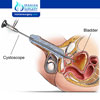
Cystoscopy Procedure
Cystoscopy (sis-TOS-kuh-pee) is a procedure used to see inside your urinary bladder and urethra — the tube that carries urine from your bladder to the outside of your body.
A hysteroscopy is a procedure to look inside your womb (uterus) to check for any problems. Sometimes, a problem can be treated at the same time
Hysterectomy is a surgical procedure in which the uterus is removed. There are several types of hysterectomy.
if you decide to have a Cheek Implants in Iran, reading this article can improve your knowledge about cheek augmentation cost in Iran to a great extent and help you to choose the best city and hospital to perform plastic surgery in Iran.
Swelling inside your wrist causes the compression in carpal tunnel syndrome. It can lead to numbness, weakness, and tingling on the side of your hand near the thumb.
The first official day of your IVF treatment cycle is day 1 of your period. Everyone’s body is different, and your fertility nurse will help you understand how to identify day 1.
If you decide to have a Septoplasty in Iran, reading this article can improve your knowledge about cost of Septoplasty in Iran to a great extent and help you to choose the best city and hospital to undergo Septoplasty in Iran.
If you decide to have an Arachnoid Cyst Treatment in Iran, reading this article can improve your knowledge to a great extent and help you to choose the best city and hospital to treat your Arachnoid Cyst in Iran.
Spinal Tumor surgery in Iran is provided with best medical services, high quality equipment and modern technology by competent medical professionals
Radiation therapy is a type of cancer treatment that uses beams of intense energy to kill cancer cells. Radiation therapy most often uses X-rays, but protons or other types of energy also can be used.
A rectocele is a type of pelvic organ prolapse. It happens when the supporting ligaments and muscles weaken in the pelvic floor. Other names for a rectocele are a posterior vaginal wall prolapse or proctocele.
A coronary angiogram is a procedure that uses X-ray imaging to see your heart’s blood vessels. The test is generally done to see if there’s a restriction in blood flow going to the heart.
Heart bypass surgery, or coronary artery bypass graft (CABG) surgery, is used to improve blood flow to your heart.
A cochlear implant is a small electronic medical device that improves moderate to severe hearing loss. It’s used to help hearing loss in adults, children, and babies.
Iranian Surgery has offered IVF in Iran and has been chosen as one of the Top Medical Tourism Company in Iran,Here you can find The Best Ivf clinic in Iran.
The cost of a Dental Implant in Iran is around $600, compared to the USA which is around $4500. Thus, if you decide to have a Dental Implant in Iran, reading this article can improve your knowledge about cost of Dental Implant …
Once retrieved, the eggs are fertilized and grown in the IVF laboratory for five to six days, then frozen. About two weeks after the egg retrieval procedure, most patients will begin their natural menstrual period
Improvements to your nose’s appearance such as: increasing or decreasing its size, making it wider or narrower, removing bumps, changing its contour, and changing the size or shape of your nostrils
Before IUI is carried out, you and your partner’s fertility will need to be assessed to find out why you are having difficulty conceiving and to see whether IUI is suitable for you.
The femoral neck is the most common location for a hip fracture. Your hip is a ball and socket joint where your upper leg meets your pelvis. At the top of your femur (which is your thigh bone) is the femoral head
If you decide to have a Fat transfer in Iran, reading this article can improve your knowledge about the cost of Fat transfer in Iran to a great extent and help you to choose the best city and hospital to undergo Fat transfer in Iran.
A cornea transplant is a surgical procedure that involves removing all or part of a damaged cornea and replacing it with healthy corneal tissue from a donor.
Once retrieved, the eggs are fertilized and grown in the IVF laboratory for five to six days, then frozen. About two weeks after the egg retrieval procedure, most patients will begin their natural menstrual period
Pre-implantation genetic diagnosis (PGD) is a genetic testing procedure performed on embryos created with in-vitro fertilization by examining an embryo for a specific genetic mutation known to cause serious disease. It enables people with an inheritable condition in their family to avoid passing it on to their children.
Parkinson’s disease is broken into five stages. Each stage presents changing or new symptoms that a person is likely to encounter.

